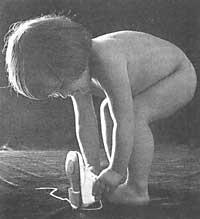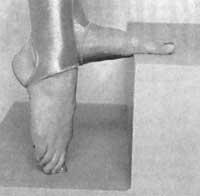Spicy footwear

The feet are a good example of adaptation: muscles, bones and tendons adapt perfectly to the needs of the body. But the fact of being biped (the human being is usually and walking on the two feet) and the use of inadequate shoes causes specific injuries to the feet.
The structure of the foot should be similar to a vault for the base (in this case the sole) to bear all the weight. This is the main function of the foot. But normally this task is not performed in the best conditions. However, with the passage of time, fashion has made our shoes more and more shortened for aesthetic purposes until we get to hurt and mutilate the foot. Avoiding it is, therefore, the main prevention standard.
Let us now see the most frequent lesions:
Joanikotes
It is the most common lesion in the toes. It consists of the deviation of the thumb finger, both in one foot and in both. Sometimes, due to bone alterations that occur in the foot, there are also large lumps or salts that people call Joanikote.
The causes of its appearance are multiple, from rheumatic diseases to inadequate shoes, with muscle imbalances or bone alterations. It has been observed that it is more frequent in Egyptian feet (the first finger, which is longer than the second).
Treatment will depend on deviation and pain. However, if you want to avoid its appearance, it is recommended to use long and wide shoes ahead, with a maximum heel of 5 cm. Surgical intervention is only recommended when the process is very advanced.
Metatarsalgias

Or diseases that cause pain in the front of the foot (metatarsus). The reasons are many and different, but taking into account that in 89% women suffer them, most of the time the shoe has an important role, especially the high heel, to the extent that when lifting the heel produces a weight overload on the foot.
After discarding other causes, the solution is to replace antianatomical shoes with a template that prevents pain.
Talalgias - Talalgias
Pain in the back of the foot (especially around the heel).
Aside from the pain suffered by the child during his or her growth, rheumatic and other rare diseases, usually occur for two causes: heel spur and bursitis.
Calcareous spurs are not produced by inadequate shoes, but the symptoms disappear with a proper template, since this internal rejection is not supported directly on the floor.
The very narrow shoes nail the buttress in the heel, while the too big shoes cause the foot to come out again and again, and the friction that is generated generates bursitis. Its treatment is through appropriate shoes.
Hammered fingers

Delay or retraction of the fingers: while the first phalanx or finger bone is very widespread, the others are bent, which causes hardness (calluses) and bursitis by the friction of the fingers with the tip of the shoes. The treatment is surgical.
Fifth finger “var”
It is the inverse deformation of the battering ram, that is, that the fifth finger is turned inward. The reasons to have them born, but also to be taken. Treatment and prevention as the young.





